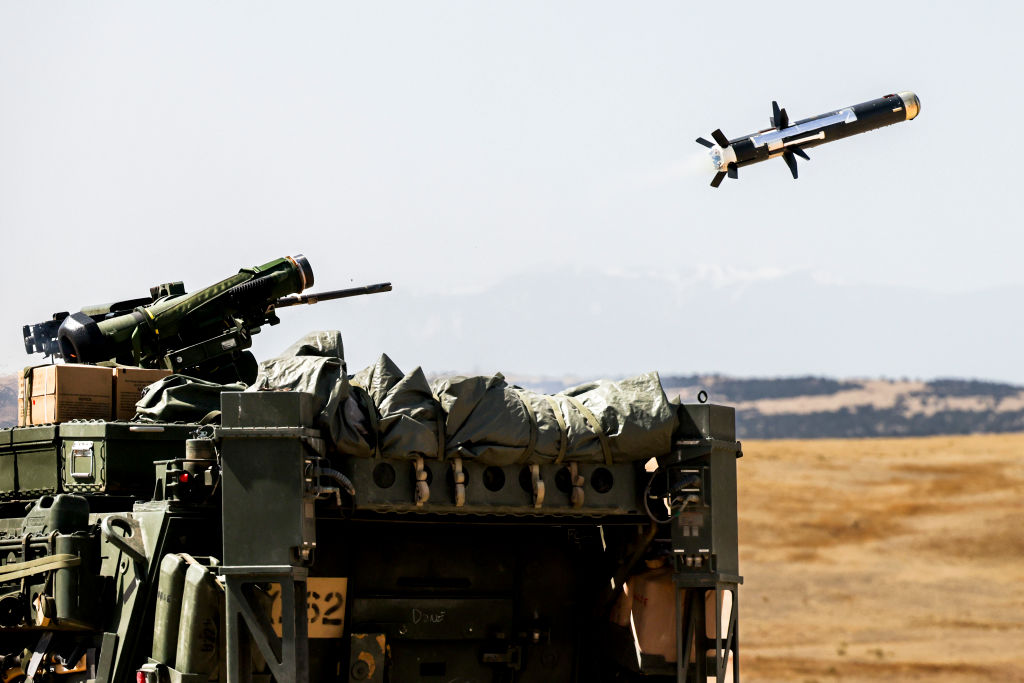Shlomo Ben-Ami

Some view these companies as the ‘arsenal of democracy’, as US President Franklin Delano Roosevelt called the American industrial effort to support the Allies during the early days of World War II. And their role in helping Ukraine fend off Russian occupation is undeniable. But their profit motive and influence over American foreign policy threaten to turn the arsenal against democracy itself.
For years, the US arms industry—together with other major arms exporters such as Russia, China, France, the United Kingdom and Israel—has reaped the benefits of protracted wars and long-term military alliances. American contractors, now in control of 39% of the global arms trade, began rearming Europe long before Russia invaded Ukraine. While arms exports declined by almost 5% globally between 2017 and 2021, Europe increased its rearmament commitments by 19%.
In the United States, defence contractors are among the biggest lobbyists in Washington. In late 2019, Transparency International described how ‘dark money’ groups persuade members of Congress to approve arms sales to repressive regimes. Even in the case of arms sales to Israel, the five biggest US weapons producers spend three to five times as much on lobbying Congress as Israel’s powerful lobby group, the American Israel Public Affairs Committee.
For decades, the arms industry has been a hidden hand shaping US foreign policy—including its unnecessary wars. US President Dwight Eisenhower warned of precisely that in his 1961 farewell address: ‘the acquisition of unwarranted influence’ by America’s ‘immense military establishment and a large arms industry’ could lead to ‘the disastrous rise of misplaced power’.
Within a few years, the US became disastrously entangled in the Vietnam War. And when the memories of that defeat faded, other failed, costly conflicts followed, notably the two Iraq wars and the 20-year war in Afghanistan, which ended ignominiously in 2021.
Of course, none of this justifies Russian President Vladimir Putin’s brutal revisionism or his war of aggression in Ukraine. Still, it’s difficult to understand the history of NATO or evaluate the merits of its proposed enlargement without considering how much time and money the US arms industry spent lobbying for it.
Since the late 1990s, America’s major defence contractors have advocated expanding NATO, despite a near-universal consensus among high-level US security officials that enlargement was unnecessarily provocative and would likely trigger the resurgence of Russian revisionist nationalism.
Enlargement, it turned out, was driven mainly by domestic political considerations. Dan Rostenkowski, the chair of the House Ways and Means Committee until 1994 and an outspoken member of the Polish lobby in Congress, threatened to obstruct budget and other legislation unless NATO enlargement included Poland.
The arms lobby cheered. Following the end of the Cold War, defence contractors hoped enlargement would offset shrinking demand by creating a new market for their products. The US Committee to Expand NATO—an advocacy organisation founded in 1996 by Bruce L. Jackson, then the director of strategic planning at Lockheed Martin—was practically a creation of the defence industry.
The accession of ex-communist Central European countries like Hungary, Poland and the Czech Republic proved very lucrative for US manufacturers of advanced weapons systems. The windfall didn’t escape Democratic US Senator Tom Harkin, who in a 1997 Senate hearing characterised the Clinton administration’s push for NATO enlargement as ‘a Marshall Plan for defense contractors who are chomping at the bit to sell weapons and make profits’.
Admitting Finland and Sweden to NATO will similarly open up a big new market for US defence contractors, because the alliance’s interoperability rule would bind them to American-made defence systems. The war in Ukraine has exposed the extent of Europe’s failure to achieve ‘strategic autonomy’: 60% of Europe’s military capabilities are currently sourced from outside the European Union.
This has spurred European policymakers to formulate plans to reduce the bloc’s dependency on US-made weapons. In the hope of getting some of the €200 billion in increased defence spending approved by the EU in May, European arms manufacturers and investment banks have even gone so far as to classify their industry as making ‘a positive contribution to “social sustainability”’ under the EU’s environmental, social and governance criteria.
In the short run, however, it is the US arms industry that will benefit the most from Europe’s defence spending spree. The US State Department, for example, recently approved a US$8.4 billion sale of F-35 fighter jets to Germany. And to governments in Central and Eastern Europe, buying American has always been the best way to ensure US protection.
Europe’s quest for strategic autonomy is bound to be a long one. The US has spent six times as much on research and technology as a proportion of its defence budget as European countries have. And thanks to the largesse of Congress, which earlier this year increased the US defence budget by 9% to a record high of more than US$800 billion, the American arms industry is all but guaranteed to maintain its technological advantage for many more years.
There are of course compelling political and moral reasons for America’s decision to answer the Ukrainian people’s call for help. But it is also evident that if the US fails to limit the influence that the enormous military–industrial complex has over its foreign policy, it will find itself mired in many more armed conflicts, not all of them as easily justified as the war in Ukraine.
No comments:
Post a Comment